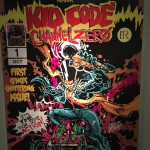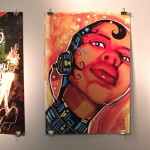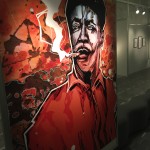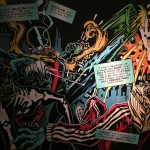When you hear the phrase art exhibit, certain images and memories probably pop into your head. Maybe you remember getting dragged along to stuffy galleries by your parents on long Sunday afternoons. Maybe you remember staring at a blank canvas that was secretly disguised as modern art. Maybe you even like art exhibits, and reminisce fondly over spending hours looking at old Renaissance pieces.
Visible Noize, the current exhibition at Gallery 360 here at Northeastern is nothing like that.
The walls of the exhibit are adorned with Afrofuturistic drawings and comics, with everyone from black teenage superheroes to Martin Luther King depicted in the works. While comics might not be the first weapon you think of combating in racism, the exhibit raises critical questions and exposes major holes in the media and art industry.
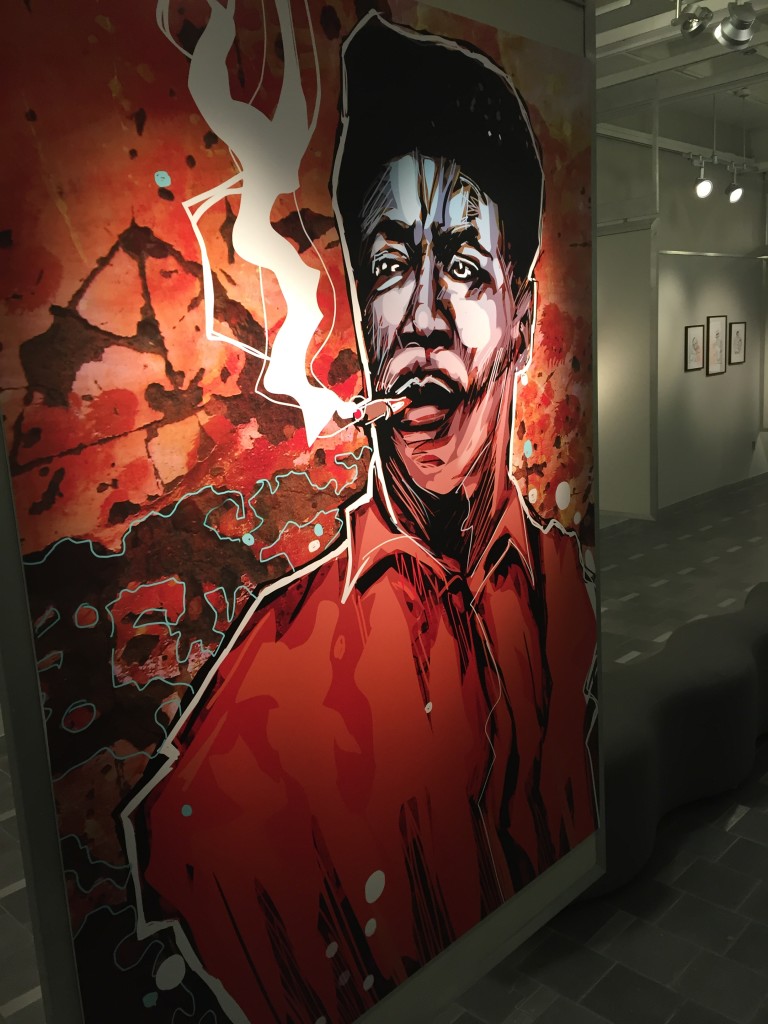
John Jennings, an associate professor of art and visual studies at the University of Buffalo and award-winning author and artist, is the primary driving force behind the exhibit. Northeastern University officials reached out to him, and after those initial talks, it took about six months for the exhibit to come to fruition.
Jennings describes the exhibit as a “small retrospective of [his] work related to various modes of black speculative cultural production,” and notes that it is unique in part because it focuses heavily on the different steps of making a comic. “The show is very centered on process and shows a lot of original analog sketches and also large reproductions of sequential illustrations,” he said.
He believes that there is an undeniable lack of black pop culture figures in our current society, to the point where it is impacting minority children.
“It’s important for everyone to see themselves in the culture that they participate in,” said Jennings. “Any images that we can find that depict what society actually looks like adds to the self-esteem of kids of color.”
His drawings certainly seem to do that. A vivid and huge comic strip hangs on one wall and sticks out as particularly powerful. It depicts a hero in a crackling array of colors, narrating his purpose. One quote in particular stands out: “I fight because the whole of time and space is engineered so that I can’t win.” It is a startlingly honest and aggressive statement, one that accurately reflects the struggle of being black in America. It is not hard to see the effect they could have on a child who has traditionally only seen his heroes depicted as white males.
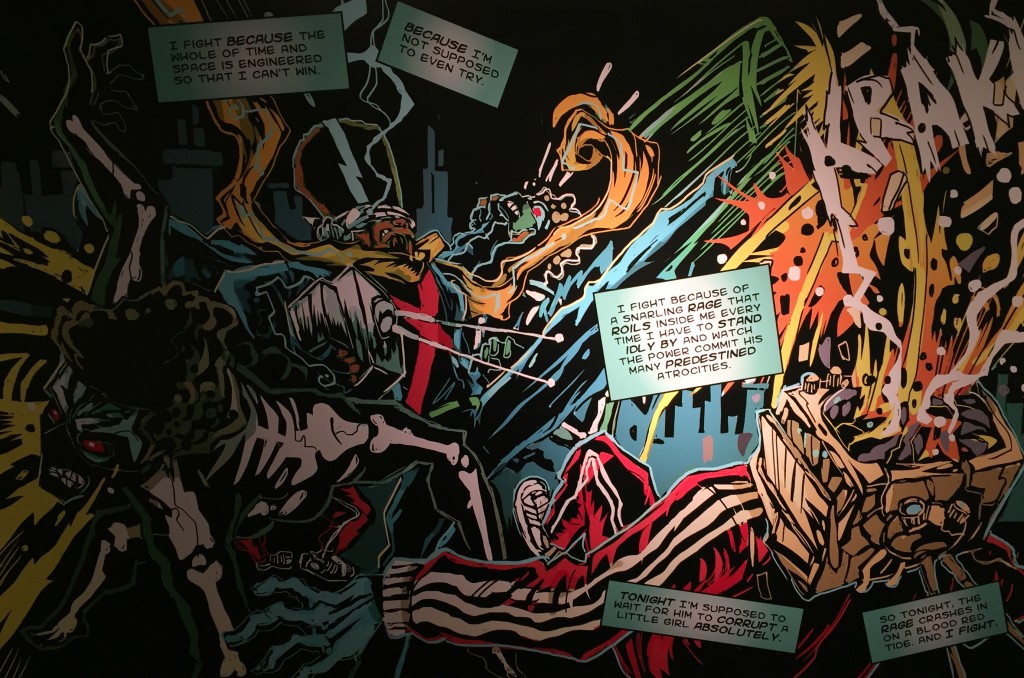
Kyle Taylor, a black first year journalism student, believes Jennings’ art is working towards a more equal representation in media. “He is definitely taking a step in the right direction by using minorities so prominently,”said Taylor.
While Jennings’ work is certainly different than most mainstream cartoons and graphic novels, he ultimately hopes that it will become a normal representation. “These images are not only necessary, but should be naturalized,” said Jennings.
The current state of diversity in pop culture may not be ideal, but Jennings is optimistic about the future. “I do see [representation] improving,” he said. “Even if it’s because of the rapid increase of people of color in our country and how that increase will create more markets.”
Taylor believes that art such as Jennings’ is a good preliminary step, but more effort is needed. “[We need to] consciously keep making an effort that promotes black people and minorities normally as opposed to having every black art be some kind of statement,” he said.
As for future endeavors, Jennings hopes to do more of the same. “I think that my work will most likely stay in the same vein,” he said. “I intend to try and get out more of my ideas by changing my formatting for my stories, methodologies, and also by more collaborations with other creators who are like minded.”
Right now, Jennings’ work is unusual in a whitewashed field.If he has his way, art like his will no longer stand out as unique. It will simply be normal.
Visible Noize is located in Gallery 360 in the Curry Student Center. The exhibition will be in place until March 14.
